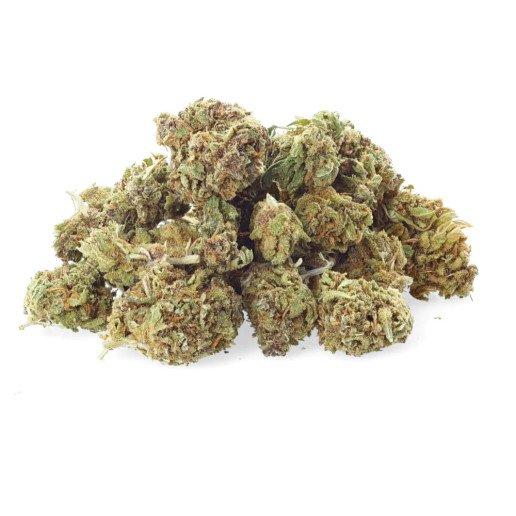Title: Unveiling the Green: A Journey into the World of Cannabis
In a world where the conversation around cannabis is evolving rapidly, understanding this multifaceted plant has never been more crucial. From its ancient roots in traditional medicine to its modern role in recreational use and therapeutic applications, there’s much to explore about weed beyond the surface. Whether you’re a curious newcomer or someone seeking to deepen your knowledge, this article will guide you through the essential aspects of cannabis culture, its various strains, the science behind its effects, and the legal landscape shaping its acceptance around the globe. So, let’s embark on this enlightening journey to demystify the green herb and discover the myriad ways it intersects with our lives.
Table of Contents
- Understanding the Basics of Cannabis: From Strains to Effects
- Exploring Consumption Methods: Choosing What Works Best for You
- Navigating the Legal Landscape: Regulations and Responsible Use
- Growing Your Knowledge: Tips for Safe and Informed Cannabis Practices
- Q&A
- Future Outlook
Understanding the Basics of Cannabis: From Strains to Effects
To fully appreciate cannabis, it’s essential to grasp the various strains that contribute to its diverse effects. Primarily, cannabis is classified into three main types: Indica, Sativa, and Hybrid. Each strain carries distinct characteristics that influence not only the physical appearance but also the mental and physical effects users may experience. For instance, Indica strains are typically relaxation-oriented, making them suitable for winding down, while Sativa strains are more energizing, often enhancing creativity and sociability. Hybrids, as the name suggests, combine elements from both Indica and Sativa, providing a balance that can be tailored to individual preferences. It’s important to explore these options to find the right fit for your needs.
Beyond strains, the effects of cannabis are also influenced by compounds known as cannabinoids and terpenes. Cannabinoids, such as THC and CBD, play crucial roles in determining the psychoactive properties and therapeutic benefits of cannabis. While THC is renowned for its intoxicating effects, CBD has gained popularity for its ability to provide relief without the high. Meanwhile, terpenes contribute to the aromatic profiles of cannabis and can modulate its effects. Some noteworthy terpenes include:
- Myrcene: Known for its sedative effects, often found in Indica strains.
- Limonene: Associated with uplifting moods, commonly found in Sativa strains.
- Caryophyllene: Unique for its ability to interact with cannabinoid receptors, it may also provide anti-inflammatory benefits.
| Strain Type | Main Effects |
|---|---|
| Indica | Relaxation, Sleepiness |
| Sativa | Euphoria, Energy |
| Hybrid | Balanced Effects |
Exploring Consumption Methods: Choosing What Works Best for You
When it comes to consuming weed, the options are as varied as the strains available. Each method offers a unique experience, influencing not just how you feel, but also how quickly the effects kick in and how long they last. Inhalation methods, such as smoking or vaping, provide the fastest onset of effects, making them popular among users seeking immediate relief or enjoyment. In contrast, oral consumption methods, like edibles or tinctures, tend to deliver a more gradual experience, with effects that may surprise those who underestimate their potency. Your choice may depend on personal preference, desired effects, or even social settings.
It’s also essential to consider factors like dosing and onset time during your experimentation. Here’s a quick look at some common consumption methods and their characteristics:
| Method | Onset Time | Duration |
|---|---|---|
| Smoking | Immediate | 1-3 hours |
| Vaping | Immediate | 2-4 hours |
| Edibles | 30-90 mins | 4-8 hours |
| Tinctures | 15-45 mins | 4-6 hours |
As you explore these methods, keep in mind that everyone’s body reacts differently, and factors like tolerance, metabolism, and personal goals should guide your choices. Experimenting in a safe and controlled environment can help you discover what works best for you while enhancing your overall experience with weed.
Navigating the Legal Landscape: Regulations and Responsible Use
Understanding the complex world of cannabis regulations is crucial for anyone looking to partake in or learn about weed. As legalization continues to evolve across different regions, it’s essential to stay informed about the local laws governing purchase, possession, and use. Various jurisdictions have their own specific regulations, which may include:
- Age Restrictions: Most places require users to be a certain age, typically 21 or over.
- Quantity Limits: There are often restrictions on the amount one can possess for personal use.
- Consumption Locations: Use may be restricted to private locations, prohibiting public consumption.
- Home Cultivation Rules: Guidelines may exist on whether individuals can grow their own plants.
Responsible use of cannabis entails more than just following regulations; it’s about understanding its effects and making informed choices. Individuals should educate themselves on potency, dosing, and variety, as these factors greatly influence the experience. For a clear overview, consider this simplified table showing common cannabis strains and their effects:
| Strain Type | Effect |
|---|---|
| Sativa | Uplifting, energizing |
| Indica | Relaxing, calming |
| Hybrid | Balanced effects |
By prioritizing responsible cannabis use, individuals can contribute to a positive culture around this plant while remaining compliant with the law.
Growing Your Knowledge: Tips for Safe and Informed Cannabis Practices
Understanding cannabis is not merely about getting high; it’s about appreciating its diverse effects, therapeutic benefits, and best practices for consumption. To enhance your knowledge base, consider exploring different strains and their properties. You can start by focusing on Indica, Sativa, and Hybrid types, identifying their unique characteristics:
- Indica: Often known for its calming effects, ideal for evening use.
- Sativa: Typically uplifting and energizing, suitable for daytime activities.
- Hybrid: A blend of the two, designed to offer both relaxation and stimulation.
Additionally, familiarizing yourself with various consumption methods can significantly impact your experience. Here’s a quick overview of the most common options:
| Consumption Method | Benefits | Drawbacks |
|---|---|---|
| Smoking | Immediate effects; easy to control dosage. | Can be harsh on lungs; less discreet. |
| Vaping | Less harmful; portable. | Requires equipment; flavor may vary. |
| Edibles | Long-lasting effects; delicious options. | Delayed onset; risk of overconsumption. |
Always prioritize safety and responsibility in your journey. Know the legal status of cannabis in your region, and stay informed on its potential effects, especially concerning dosage and interactions with other substances. Engaging with established research, joining community forums, and discussing your experiences with knowledgeable users can further cultivate a responsible approach to cannabis consumption.
Q&A
Q&A: Learning About Weed
Q: What is cannabis?
A: Cannabis is a plant that has been cultivated for thousands of years and is commonly known for its psychoactive properties. It has various strains, each with its unique blend of cannabinoids, of which THC (tetrahydrocannabinol) and CBD (cannabidiol) are the most well-known. These compounds interact with the human endocannabinoid system, leading to a range of effects.
Q: What are the different types of cannabis?
A: Cannabis is generally classified into three main types: Cannabis sativa, Cannabis indica, and Cannabis ruderalis. Sativa strains are often associated with uplifting and energizing effects, making them popular for daytime use. Indica strains tend to provide relaxing and sedative effects, ideal for evening use. Ruderalis is less common and typically has lower THC levels. Hybrid strains, a mix of the two, offer a combination of effects.
Q: How is cannabis consumed?
A: Cannabis can be consumed in various ways, including smoking, vaping, edibles, tinctures, and topical applications. Each method has a different onset time and duration of effects. For instance, smoking or vaping provides immediate effects, while edibles may take longer to kick in but can offer a more prolonged experience.
Q: What is the difference between THC and CBD?
A: THC is the primary psychoactive compound in cannabis, responsible for the “high” feeling. In contrast, CBD is non-psychoactive and is often sought after for its potential therapeutic benefits, such as reducing anxiety and inflammation. Both compounds have their unique uses and effects, leading to a diverse range of products available on the market.
Q: What are some common misconceptions about weed?
A: Some common misconceptions include the idea that all cannabis use leads to addiction or negative health effects. While excessive use can lead to dependency in some individuals, many people use cannabis responsibly for relaxation, pain management, or creativity. Additionally, not all strains produce a “stoned” feeling; some can promote alertness and focus.
Q: Can cannabis help with medical issues?
A: There is growing evidence to support the use of cannabis for various medical conditions, including chronic pain, epilepsy, PTSD, and certain types of cancer. However, research is ongoing, and individuals should consult healthcare professionals before using cannabis as a treatment option.
Q: What should I consider before trying cannabis?
A: Before trying cannabis, consider factors such as your health history, potential interactions with medications, and the legal status in your area. It’s also wise to start with low doses to see how your body responds, especially if you are new to cannabis. Educating yourself about strains, consumption methods, and the effects can enhance your experience.
Q: Is it legal to use cannabis everywhere?
A: Legal status varies widely around the world and even within regions. In some places, cannabis is fully legal for recreational and medical use, while in others, it may be restricted or prohibited. Always check local laws before using or purchasing cannabis to ensure you remain compliant.
Q: Where can I find more reliable information about cannabis?
A: Reliable information can be found through credible health organizations, peer-reviewed studies, and educational resources dedicated to cannabis research. Online forums and dispensary staff can also provide insights, but it’s crucial to verify information from multiple sources to avoid misinformation.
Future Outlook
As we draw the curtains on our exploration of cannabis, it’s clear that this fascinating plant is more than just a source of intrigue and debate; it’s a complex tapestry woven with history, culture, science, and evolving legality. Whether you’re curious about its medicinal properties, the art of cultivation, or the myriad ways it intersects with society, understanding cannabis is an ongoing journey. As we strive to demystify the nuances of weed, let’s embrace a mindset of education and open dialogue. In doing so, we not only empower ourselves but also contribute to a broader understanding of this multifaceted topic. So, whether you approach it as a novice or a seasoned enthusiast, keep asking questions, seeking knowledge, and engaging thoughtfully in conversations about cannabis. After all, this is just the beginning of a deeper inquiry into the world of weed. Happy exploring!


